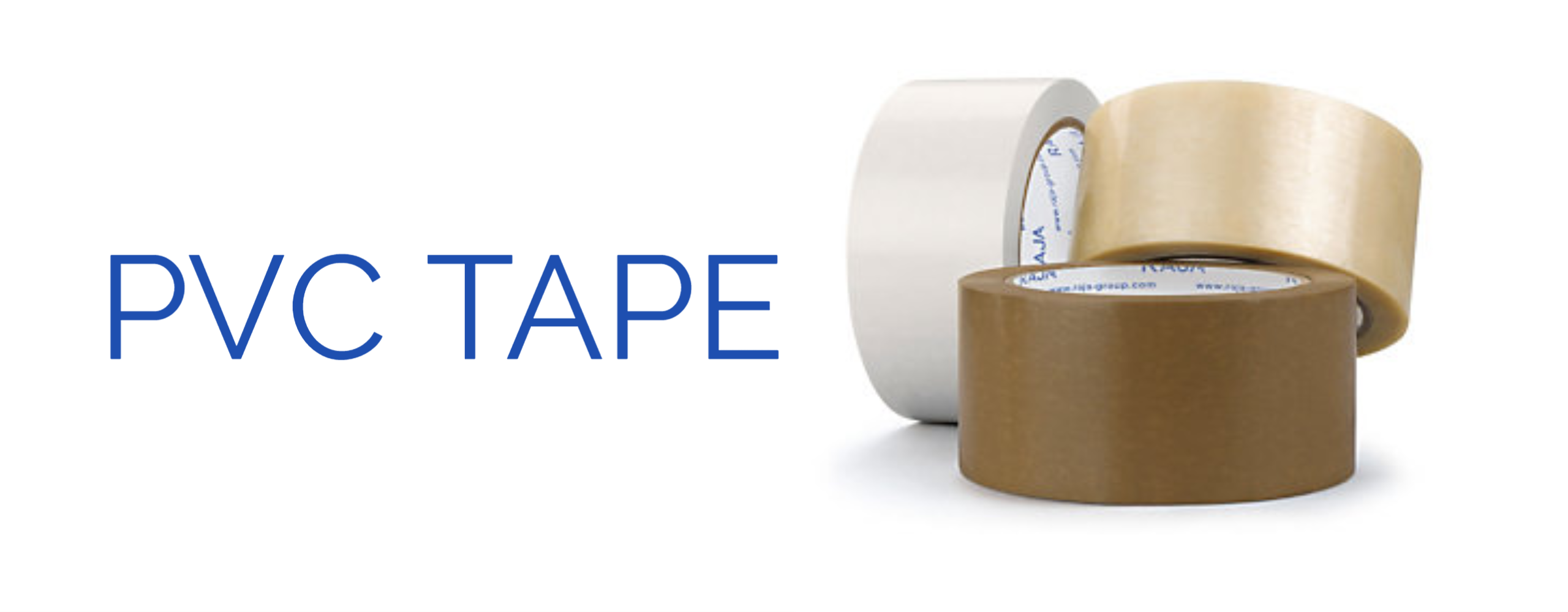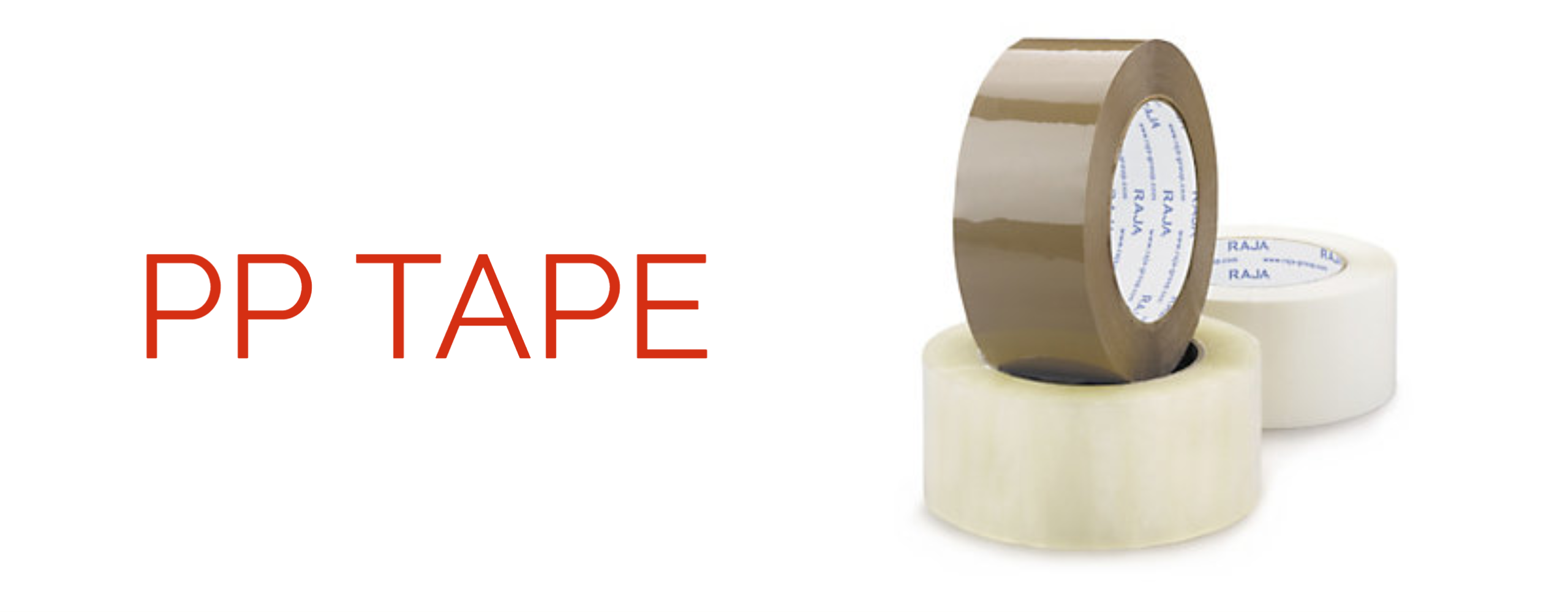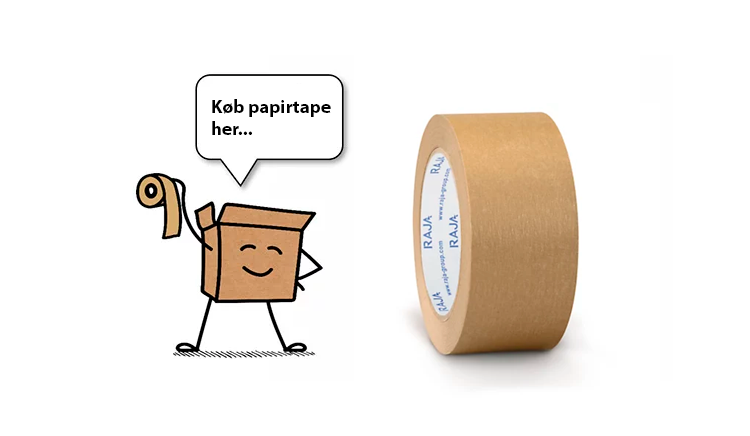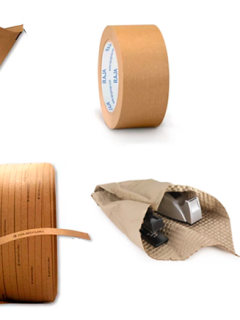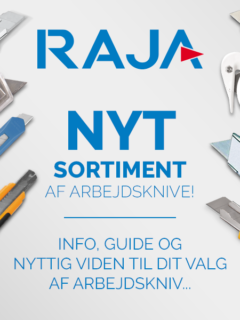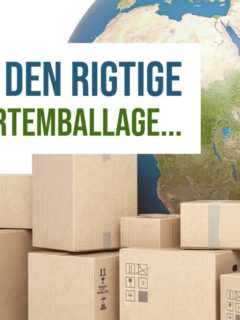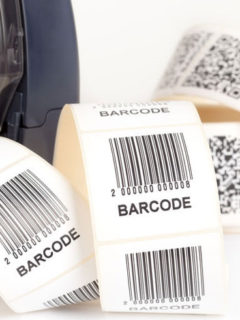When people think of packaging tape, they often think of a plastic film with an adhesive. That’s true to some extent, but tape isn’t just tape. At RAJA we have several different types, which can be made of PP, PVC or paper. In this post we’ll look at PP tape and PVC tape and paper tape. PVC ofg PP tape both consist of a plastic film and some adhesive, and they are some of the most popular tape varieties on the market. Paper tape, on the other hand, consists of kraft paper and an adhesive, and it’s good eco-friendly alternative to standard plastic tape.
- How can you tell the difference between PP and PVC tape?
- The differences between PVC, PP and Paper tape
- Properties of PVC tape
- Properties of PP tape
- Characteristics of Paper Tape
- A little about glue
- How recyclable are the different types of tape?
> How can you tell the difference between PP and PVC tape?
If you only look at the appearance of the two types of tape, you will probably see that PVC tape has a more matte surface than PP tape. This will of course only be visible if you are standing with both types of tape.
To be absolutely sure, we recommend that you perform an elasticity test. This can be done very easily using a ballpoint pen. Stretch out a piece of tape and try to stick the pen directly through the tape. The following will happen:
- PVC tape = The tape has a high elasticity, so the pen will be able to poke a hole in the tape.
- PP tape = This tape has much lower elasticity and the tape will break if you try to stick a pen through it.
> The differences between PVC, PP and Paper tape
| PVC | PP | Paper |
| Quiet unrolling | Not quiet unrolling (except for Low Noise PP tape) | Quiet unwinding |
| Elastic | Not elastic | Not elastic |
| Appearance: matt | Appearance: Transparent | Appearance: Brown appearance in kraft paper |
| Adhesive: natural rubber | Glue: acrylic, natural rubber and hotmelt | Glue: natural rubber and hot melt |
| Use: Boxes from 30-40 kg | Use: Boxes from 20-30 kg | Use: Boxes from 20-30 kg |
> Properties of PVC tape
PVC tape used to be the standard for tape worldwide. Today, however, PVC is slightly overshadowed by PP tape, but is still one of the most versatile tape variants on the market:
- It is suitable for medium to heavy packages. 30-40 kg.
- Low noise: It is much quieter when unrolled than PP tape (although there is Low Noise PP tape). This can be an advantage for people who close boxes all day and therefore want to avoid the noise.
- Elastic: As mentioned earlier, PVC tape is much more elastic than PP tape, for example. This means that PVC is very versatile. However, the elasticity also means that the tape cannot be torn, so therefore you need to use scissors or a dispenser.
- Matt transparency: The tape is not completely transparent and may have a yellowish appearance.
- Glue: Natural rubber. You can read more about glue further down in the post.
> Properties of PP tape
PP is an abbreviation for polypropylene, which is of the many types of plastic. It is today the most widely used type of packaging tape worldwide. The fact that it is often cheaper than PVC tape may be one of the factors that come into play when people choose their parcel tape. However, this is not the only place where the tape differs:
- Suitable for light and medium weight packages. 20-30 kg.
- Noise or Low Noise: PP tape in its cheapest standard version is not silent. When unrolled, it produces a cutting sound of about 75 decibels. That’s as much noise as when a car drives past you. But there is also a Low Noise version of PP packing tape.
- Not elastic:This type of tape is much less elastic than PVC tape and therefore breaks much more easily. This is an advantage, however, as it makes the tape easier to tear by hand.
- Transparent: In addition to the familiar brown versions, there is also a transparent and clear version. This can be an advantage if you use boxes with print, then you can see this through the transparent tape.
- Adhesive:The standard adhesive for PP tape is hot melt. Low Noise uses acrylic.
> Properties of paper tape
If you’re looking for an environmentally friendly alternative to plastic tape, paper tape could be a good option. A big advantage of paper tape is that, unlike plastic tape, it can be recycled with the cardboard box.
- Suitable for light and medium weight boxes: 20- 30 kg
- Low noise: It is much quieter when unrolling than PP tape (though there is Low Noise PP tape). This can be an advantage for people who close boxes all day and therefore want to avoid the noise.
- Non-elastic: The paper is not elastic and therefore breaks very easily. However, this is an advantage as you can tear the tape by hand and therefore you do not need scissors or a dispenser.
- Not transparent: The tape is made of brown kraft paper, which gives a nice presentation as the tape blends in with the box. In addition, a foil in paper is also an advantage, as the tape there is printable.
- Glue: Natural rubber or hot melt. In the section below you can read more about glue.
> A little about glue
- Acrylic glue: This is a water-based glue. It remains clear and does not yellow. It is the adhesive most often combined with Low Noise PP tape.
- Natural rubber: This is an adhesive with very high tack and adheres well to most surfaces. The adhesive is versatile and can easily be used outdoors. It is also very resistant to low temperatures. The adhesive can be seen in combination with both PVC tape, PP tape and Paper tape.
- Hotmelt: This is the cheapest variant within adhesives for tape. It is not as good at withstanding temperature variations as other types of adhesive. It is best suited for short-term adhesion, so it is a good choice for e-commerce, as packages are usually in transit for a shorter time. The adhesive is only used in combination with standard PP tape or some variants of paper tape.
> How recyclable are the different types of tape?
PVC tape and PP tape are both made of plastic. Plastic is difficult to recycle, so it is not always possible to recycle your packaging tape. However, some types of plastic are more recyclable than others. PP plastic is a recyclable type of plastic. PVC, on the other hand, is not recyclable. One of the reasons why the consumption of PP tape is increasing compared to PVC tape could be related to how the two tape types react to incineration. If PP tape ends up in the incinerator, it converts to CO2 and water. In contrast, PVC tape releases chlorine, which is then converted into hydrochloric acid. The hydrochloric acid turns into acid rain, which helps to destroy forests. This is why efforts are being made to collect PVC for landfill rather than incineration.
Remember sorting waste is important, so sort your plastic waste separately. It is also important to remove the tape from the cardboard boxes, as plastic tape cannot be recycled with the cardboard boxes. If, on the other hand, you look at paper tape, then you have a tape that can be recycled. One of the big advantages of paper tape is that it can be recycled with the cardboard box.
Want to hear more tape?
If you would like more guidance on which type of tape is best suited to your company’s needs, you are always welcome to contact our packaging specialists on tel 44 58 77 00 or email: info@rajapack.dk











